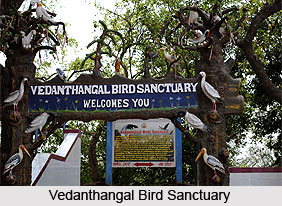 Maduranthakam located in Kanchipuram district in the Indian state of Tamil Nadu. It is a town and a municipality known for the famous Maduranthakam Lake. It is a man made and second largest lake in Tamil Nadu. It is believed to have been built by the Chola King Uthama Choza and is also known as Maduranthakar. The Aeri Katha Ramar Temple is also located here.
Maduranthakam located in Kanchipuram district in the Indian state of Tamil Nadu. It is a town and a municipality known for the famous Maduranthakam Lake. It is a man made and second largest lake in Tamil Nadu. It is believed to have been built by the Chola King Uthama Choza and is also known as Maduranthakar. The Aeri Katha Ramar Temple is also located here.
Tourist Places in Maduranthakam
Maduranthakam serves as a popular tourist spot in Kanchipuram district, visited by many tourists. One of the most visited spots is the Vedanthangal Bird Sanctuary. It is one of the oldest bird sanctuaries in India that attracts a large number of migratory birds from various parts of the world. Birds like pintail, garganey, grey wagtail, blue-winged teal, common sandpiper are found here which migrate during the month of November and remain till February. The sanctuary is almost 12 km north-west of Maduranthakam. Sri Meenakshi Sametha Venkateswarar Temple is also located here. Other than this the town is also known for Sri Kokilamba sametha Kaameswara Swami Shiva temple. The temple is mostly visited by childless couples and people suffering from sexual disorders. The village of Madavilagam is situated almost 15 km from Maduranthakam.
Demography of Maduranthakam
According to the census report of 2001Maduranthakam had a population of 29,100. Males constitute 50% of the population and females 50%. The average literacy rate of Maduranthakam is 72%. It is higher than the national average of 59.5%. The male literacy is 80%, and female literacy is 64%. 11% of the population is under 6 years of age.
This article is a stub. You can enrich by adding more information to it. Send your Write Up to content@indianetzone.com



















